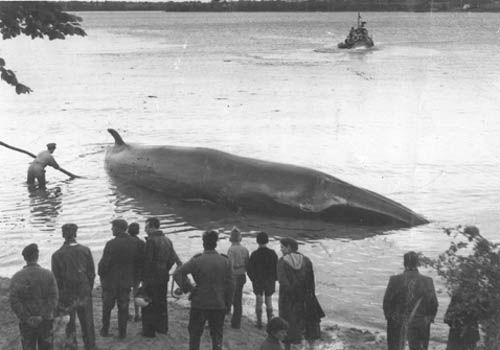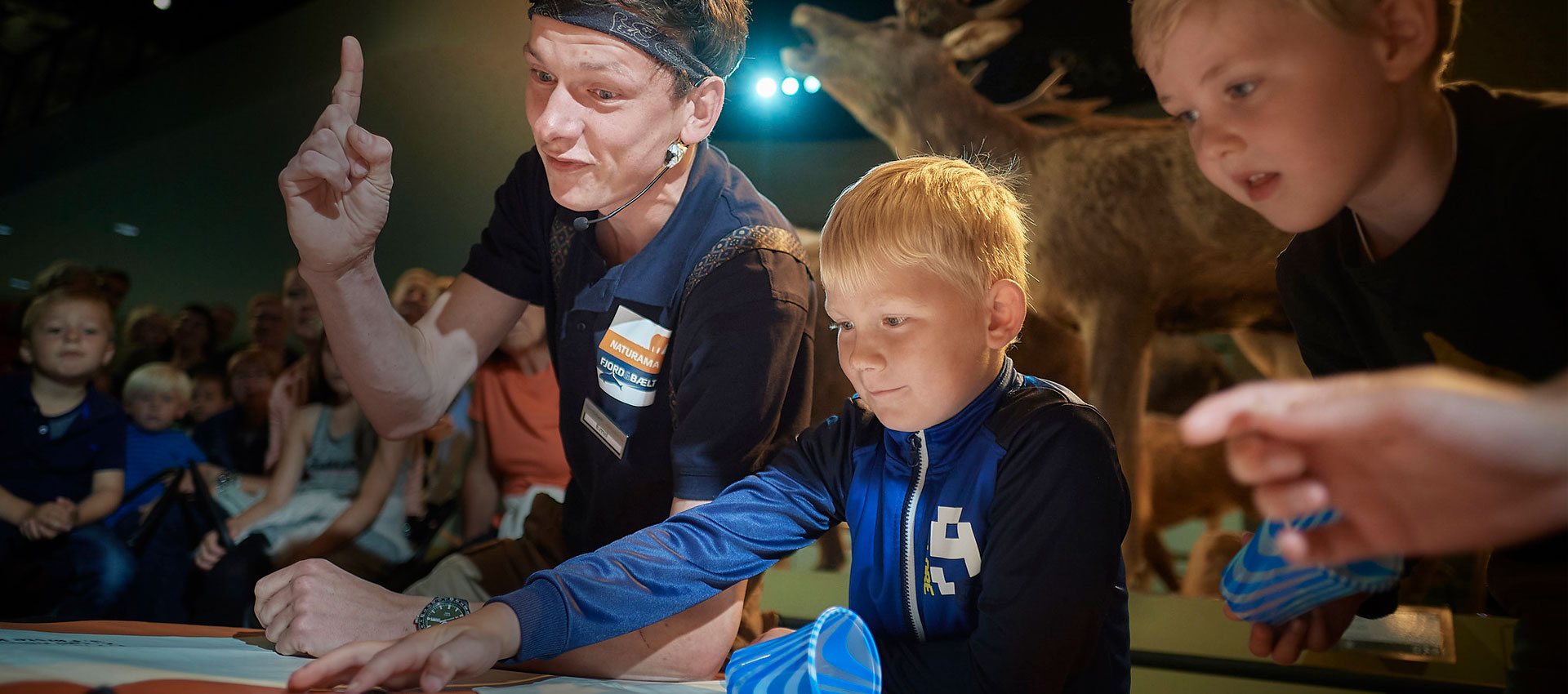NATURAMAS HISTORY
2019
Naturama presents the special exhibition "Dinosaur Families", which offers fascinating reconstructions of Dinosaurs also in life size. At the same time, another special exhibition "Nature's Jewels" is established by Nina Hald, where 35 specially invited Danish and foreign gold and silversmiths have accepted the challenge of immortalizing selected animals in precious metals, precious stones, gemstones and cultured pearls, as beautiful unique jewelry and fantastic art objects.
2018
Naturama presents the special exhibition "Microsculpture" - by Levon Biss. At the same time, another special exhibition "Fur, Feather & Fairytales" is established - by Jim Lyngvild.
2017
This year's special exhibition will be "The Tropical Forests of the Globe" and will be supplemented with the establishment of a completely new and professional sound theater, where performances of David Monachi's sound recordings from the jungle can be experienced.
2016
Naturama focuses on Brazil due to the Olympics in Rio, and opens the special exhibition "Brazil's Secrets of the Rainforest", and complements with more living rainforest animals.
2015
Mette Thybo took over on 1 August 2015, as Director of Naturama and Fjord & Bælt. Special exhibition this year is "Life at the Ice Edge".
2014
Special exhibition "Spiders".
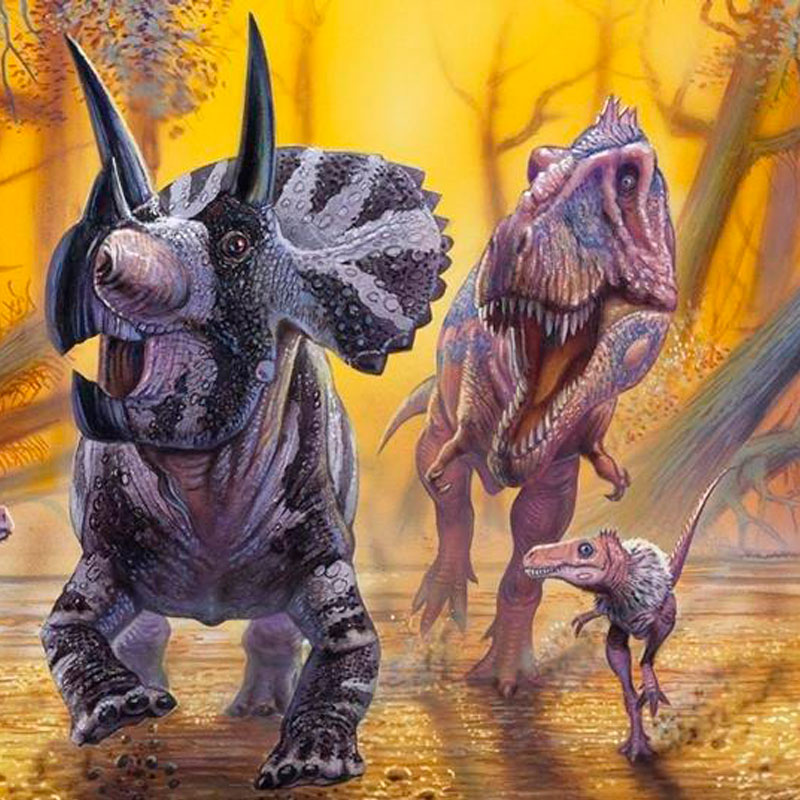
2013
Naturama enters into a cooperation agreement with Fjord & Bælt in Kerteminde. A natural collaboration between two attractions, both of which convey the fantastic stories from the animal universe. The first major collaboration is the special exhibition "Oceans of Sound". In both places the theme is SOUND. It is about sea animals and their communication at Fjord & Bælt in Kerteminde, while the focus is on animals and humans' sound universe at Naturama.
2012
Naturama focuses on Karen Blixen and her 17 years in Africa with the special exhibition "Karen Blixen's Africa".
2011
Ranger exhibition.
2010
Naturama presents the special exhibition "Predators" from the Natural History Museum in London with a focus on predators and prey, defense mechanisms and hunting techniques.
2009
Naturama shows i.a. the sensory exhibition Hole to the Head by Carl Quist-Møller and houses the Children's Art Exhibition with works by children from Svendborg Municipality.
2008
Naturama has transformed part of the exhibition into the Animal Olympics, where children and adults fight against the animals in a 7-match.
2007
Naturama shows the special exhibition "The ice is burning", which focuses on the importance of global warming for animals and birds.
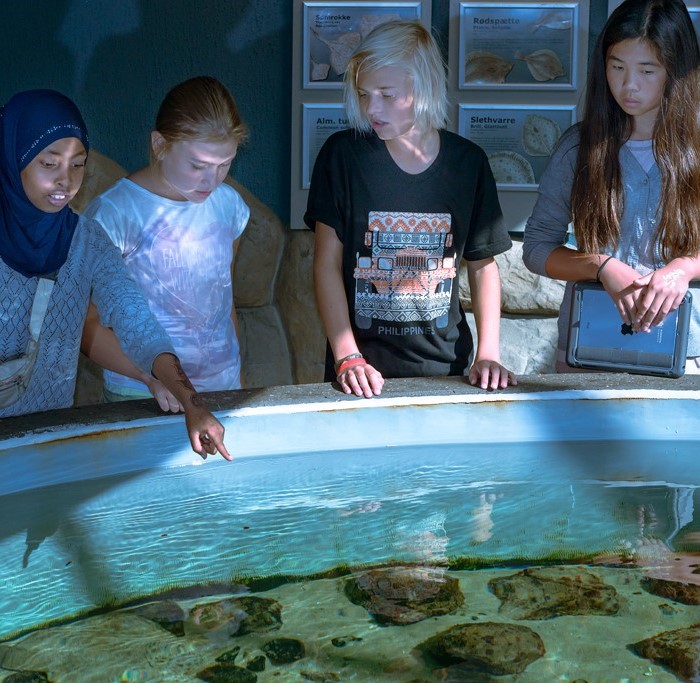
JANUARY 2005
The Zoological Museum changes its name to Naturama. The museum's staff is working intensely to get all the animals, sound and light design as well as the café and shop ready for the opening on 18 April.
APRIL 19, 2005
Naturama opens to the public. Inspiration for the new exhibition concept comes from two of Europe's leading natural history museums: the Natural History Museum in Paris and the Naturalis in Leiden, the Netherlands.
APRIL 18, 2005
Naturama will be inaugurated with speeches by county mayor Jan Boye, mayor Jørgen Henningsen, Svendborg, and museum director Jacob Salvig. Palle Mikkelborg and Gert Sørensen perform "Viva Naturama" together with children from Haahrs School in Svendborg, Peder Most Garden and Svendborg Children and Youth Theater.
JANUARY 2004
The culture committee approves the museum's new name Naturama. The name is composed of the words "nature" and "drama". The name signals an exhibition concept based on a spectacular staging of nature.
APRIL 30, 2003
County Mayor Jan Boye, Mayor Jørgen Henningsen and Culture Committee Chairman Inga-Britt Olsen are taking the first steps towards the construction of Naturama. An extension of just over 3,500 m2 from 700 m2 to 4,200 m2.
SEPTEMBER 3, 2003
Her Majesty Queen Margrethe and Prince Henrik lay the foundation stone for Naturama under great public attention and press coverage. In Naturama's foyer, the audience can see the cornerstone with the inscription "Declined on 3 September 2003 by Her Majesty Queen Margrethe and His Royal Highness Prince Henrik". In the cavity is also today's newspaper, Fyns Amts Avis, and a freshly struck twenty-krone.
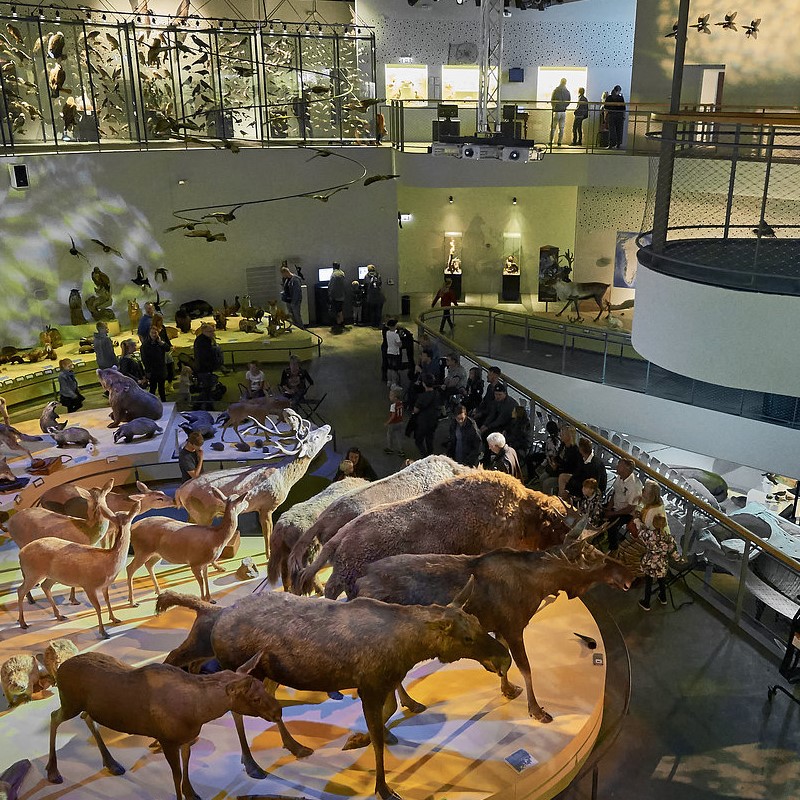
OCTOBER 2002
Svendborg Municipality appoints the companies that will be responsible for the construction process. It is carried out in a so-called partnering.
SEPTEMBER 2001
The financial basis for the construction of Naturama is finally coming to fruition. The financial basis is secured through generous grants from Funen County, the Outdoor Council, the European Union (European Regional Fund), the Labor Market Holiday Fund and Svendborg Municipality.
APRIL 1, 1998
Jacob Christian Salvig takes over as the new museum director.
FEBRUARY 1, 1979
Kirsten Salmberg Hansen is employed full time as museum director.
OCTOBER 1979
The former service building will be transferred to the museum. A conservator and exhibition workshop will be set up here.
APRIL 1, 1978
The museum achieves state recognition. This means that the museum partly obtains state support, and partly has to live up to a number of state obligations, including collection, preservation, dissemination and research.
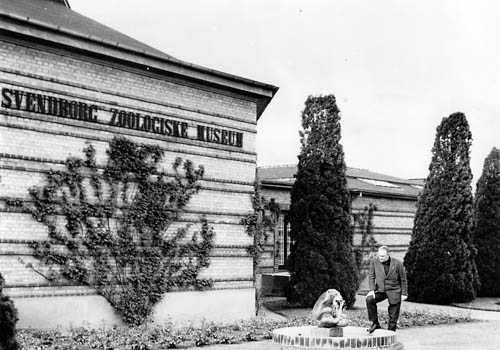
1969
Harald Thomsen dies. His new wife Inge, daughter of Mayor Ferdinand Jensen, handles the day-to-day operations. This is done together with Kirsten Salmberg Hansen, who is employed in a part-time position as museum director.
MAY 1955
A large saithe whale is stranded on Tåsinge. Harald Thomsen secures the skeleton. The whale is probably lost on its way to the sea areas off Greenland. Falck tries to save the stranded whale, but every time it is pulled out into deep water, it seeks to return to shore. It is not possible to save the whale that is eventually shot. The impressive saithe whale measures approx. 18 m.
1952
The museum is expanding as the collections have become larger. The hunting fund allocated DKK 25,000 and new floors were laid and two large showcases were procured.
1940
Svendborg Municipality takes over the operation of the museum. Gunhild Thomsen, the founder's first wife, is hired as general manager. Harald Thomsen had stated from the beginning that the museum and the collections would be transferred to the municipality at his death. Due to the occupation and difficulties with fuel and other supplies, operations were transferred to the municipality as early as 1940.
JUNE 2, 1935
Harald Thomsen inaugurates the Zoological Museum. The museum is founded as a privately owned institution. The museum's founder was an incarnated collector who collected, bought and exchanged for many different natural history preparations. These include a number of large bird collections from the South Funen estates, including Egeskov Castle. Harald Thomsen was trained as a typographer and worked for a number of years as a local editor at e.g. Svendborg Avis, now Fyns Amts Avis. When the museum opened, it also housed a unique terrarium, which housed live snakes, snakes, alligators, turtles, lizards and fish. Behind the museum was a monkey house and on the garden areas posed peacocks. However, the terrarium disappeared in favor of new exhibits. The monkey house and the peacocks also disappeared after some years as they were time consuming and disturbing to the neighbors.
